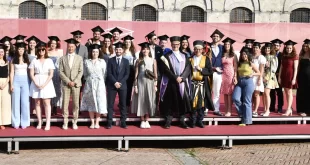PROJECT OVERVIEW
An exciting opportunity to develop a new instrument to study water storage in glaciers. You should have either a background in engineering or environmental science, but with a keen enthusiasm to design, build and field-test an instrument that will need to work in a harsh environment.
SCIENTIFIC BACKGROUND
Measuring the transit of meltwater through glaciers is critical for predicting their future behaviour as the climate warms. Increased surface melt has the potential to increase ice flow and hence glacier wasting. However, the passage of water from surface to the subsurface is complex and hence the capacity of the drainage system to store water is not well known. This project will develop a sensor for entering the glacier drainage system to measure how much water is stored in ‘moulins’. Moulins are conduits or tunnels within the glacier ice that transport surface meltwater to the glacier bed, from where it flows through a subglacial drainage network and on out to sea. It was previously assumed that moulins functioned as a direct pipe, moving water rapidly from one area to another. Recent research, including in-person exploration, has demonstrated that moulins are complex flow pathways which can store significant quantities of water. This has important implications for understanding how glaciers will respond to climate warming. We need to know how much water is stored in moulins, how long it has been resident, and how connected it is to the subglacial environment throughout the melt season. Moulins are, however, extremely challenging to explore: filled with turbulent, fast-flowing water that fluctuates hourly and frequently freezes, the technological demands of collecting the required data are extreme. Sensors must enter the moulin, survive turbulent meltwater and return data to the surface at high temporal frequency without requiring a cabled connection.
PROJECT DETAILS
You will design, model, test and deploy an autonomous “platform” (a self-contained instrument) for measuring the quantity and quality of water stored within moulins. The wireless sensor platform will enter the moulin and measure oxygen in the water to determine the degree of contact with the atmosphere (low oxygen = long storage), along with water volume fluctuations (pressure) and conductivity to assess whether water is stored in contact with ice or the glacier bed. Combined on a free-moving wireless platform, these measurements can demonstrate water storage dynamics. You will also design, test and deploy an autonomous system for salt dilution gauging, to estimate the volume of water passing through the system, giving further insight into the connection between supraglacial and englacial hydrological conditions. Moulins are a harsh environment and the platform will need to be robust to withstand being thrown around by meltwater and survive regular impacts onto the hard icy surfaces.
You will work as part of a dynamic, cross-disciplinary research team combining expertise in environmental science and engineering. They will use and develop their skills in mechanical design, electronics and management to create and deploy an instrument for use in glacier moulins. You will use methods in laboratory simulation, computational modelling, model validation and field deployment. The development of this diverse skillset will equip students to solve real-world engineering problems, with particular relevance to addressing climate challenges. The ability to deliver a design project from concept to tested field instrument is exciting, and gives the student true ownership of the project.
The studentship may offer opportunities for polar and high altitude fieldwork, to enable the student to test their prototypes in a challenging field environment. The student will have the opportunity to work with a wide network of collaborators, including NASA’s Jet Propulsion Laboratory in Pasadena, California, who are interested in this project’s potential use on future missions to icy moons like Titan, Europa and Enceladus. The cross-disciplinary nature of the project will give access to multiple research groups and their support networks. This gives access to a broad network of future employers in both academia and industry. 1st class or 2:1 BSc, MSci or relevant MSc degree in Engineering, Earth Sciences or related disciplines.
SKILLS REQUIRED
Since the project calls for a wide range of skills, we do not expect any one candidate to have all of the desirable skills listed here. You will have access to support from experienced colleagues to help you learn and develop the skills that you will need for this project. We also have existing instrument designs intended for similar environments that you can draw on to develop your instrument.
Desirable skills include:
- Mechanical engineering: design; FEM and CFD simulation; development of pressure-proof seals; laboratory and field testing and evaluation
- Electronics and software engineering: use of microcontrollers; radio communications on VHF frequencies; interfacing to analogue and digital sensors
- Fieldwork: experience of glacial environments; camping in cold climates
- Management and logistics: time management; project management; logistics skills for organising fieldwork and lab test campaigns.
PROJECT PARTNERS
The project is jointly supervised between the School of Earth & Environmental Science in Cardiff, the School of Engineering in Cardiff, and the School of Geographical Sciences in Bristol. You will have the opportunity to work in all three Schools. Some of the funding comes from NASA/JPL, and we hope that you would have the opportunity to visit their labs in California.
TRAINING
Project-specific training will include training for fieldwork (first aid, crevasse rescue, polar bear defence) and you will have access to a wide range of training opportunities available through Cardiff’s Doctoral Academy programme.
ENTRY REQUIREMENTS
First-class or 2:1 BSc, MSci or relevant MSc degree in Engineering, Earth/Environmental Sciences or related disciplines. Engineers could be from any engineering discipline; Earth or Environmental Scientists would need to additionally demonstrate some skills and knowhow in designing and making things (perhaps through hobbies or past work experience).
HOW TO APPLY
Contact Dr Mike Prior-Jones (Prior-JonesM@cardiff.ac.uk). Dr Prior-Jones is away on fieldwork from 1st – 14th April 2024 and from mid-May onwards, so may be slower than usual to respond. To find out more about what it is like to work in the team, contact Dr Lisa Craw (CrawL@cardiff.ac.uk) or Dr Jonathan Hawkins (HawkinsJ22@cardiff.ac.uk)
Funding Notes
Studentship is open to all, although applicants not currently resident in the UK will be subject to additional confirmation of their eligibility at interview stage.
Some funding for this project comes from NASA via the Jet Propulsion Laboratory in Pasadena, California. Therefore there are additional terms and conditions around the intellectual property generated from this studentship. This can be discussed at the interview stage.
References
In order to formally apply for the PhD you will need to go to the following web page:
Earth Sciences – Study – Cardiff University
In the black box on the right of the page, please select the following options:
Doctor of Philosophy
Full or Part Time
1st October 2024 (or relevant start date)
Click on ‘Apply Now’ and either create a new account or use an existing username and password if you have applied to us in the past.
Please ensure that you include the Project Title and Supervisor, and for source of funding please write ‘EPSRC’.
Job Features
| Job Category | Doctorat |
 medjouel.com Study Non Stop
medjouel.com Study Non Stop



